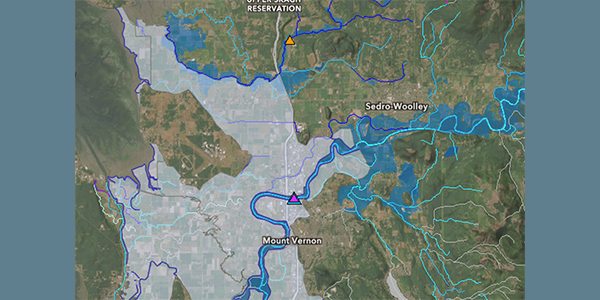— Employee costs are greatest county expense, Master Plan to be developed
— from Milene Henley, County Auditor —
On Monday, October 19, County Auditor Milene Henley and County Manager Mike Thomas will present the San Juan County Council with a preliminary 2016 budget proposal designed to maintain county services at current levels. The document is the starting point for the Council’s budget deliberations that lead up to the budget’s adoption during the first week in December.
The preliminary budget proposes to increase the County’s Current Expense (operating) budget by 4.3% to $17.34 million. The increase is slightly more than anticipated revenue and would make use of $656,000 in “available cash” to bring it into balance.
County Manager Thomas noted, “We continue to see the cost of providing the same level of service with existing resources rise faster that our revenue can with current limitations.”
While assuring the Council that the County’s cash reserves are adequate and the proposal includes contributions to both the Budget Stabilization (“rainy day”) Fund and Capital Reserves, Auditor Milene Henley warned, “Balancing the budget with available cash is not a good long-term practice.”
Wages and benefits continue to account for the largest portion of the County’s costs. Cost-cutting measures have reduced the staff size by more than 10% since 2008. Since then, employee wages have actually decreased as a percentage of the budget, but that has been offset by the increases in the cost of medical and other benefits. Under the preliminary budget proposal, the County’s workforce would increase by about 2.5 people, most of that in special revenue funds.
Thomas listed utilities and facility maintenance costs as other major factors pushing up costs. Some of the problem, Thomas noted, is the cost of maintaining aging buildings. “County Councils have long recognized the financial costs of having older county offices scattered across Friday Harbor, many in re-purposed buildings, as well as the inconvenience to the public who have to travel from building to building to transact business,” he said.
The 2016 budget will earmark some of the County’s real estate excise tax (“REET”) fund to a master plan process to develop a concept for a consolidated, cost efficient, and publicly accessible Civic Campus in Friday Harbor and consolidating Public Works’ maintenance shops, its vehicle pool, and materials storage at the County’s property on Beaverton Valley Road.
Operationally, Thomas acknowledged that County services can’t maintain quality by continuing to conduct business in traditional ways. “We are dedicating resources to training and technology, including a new website, to, at a minimum ensure – and we hope improve – the quality of the service we provide,” Thomas said.
Since early last spring, representatives of three County Departments have been working with experts from the state, guided by the principles of LEAN, to develop more efficient permit approval processes that are less subject to delays than the current system. The first major product of that work, a new permit application process for residential construction, is now being tested and is expected to go into operation in the first quarter of 2016.
On the revenue side of the budget, the Auditor is projecting conservative growth. Nearly 40% of the County’s operating revenue comes from its property tax and, due to legal limitations, it is expected to increase by only 1% in 2016. The other major revenue source, sales tax, has rebounded since the recession, with major increases over the past four years. But after two years of greater than 7% increases, the Auditor is budgeting a more modest 3% increase in sales tax revenue in the coming year.
The preliminary budget document notes that some restricted county funds begun to rebound from historic lows. The Land Bank, which is financed by a real estate excise tax, anticipates a 15% increase in 2015 after tough times during the real estate downturn. The Noxious Weed board is expecting a 17% increase after Weed Board staff performed a thorough inventory of land parcels subject to its special assessment.
Finally, according to County Manager Thomas and Auditor Milene Henley, the County’s largest department, Public Works, is in stable financial condition. It benefits from the road fund property tax and receives significant grant funding. The department’s Stormwater division will undertake two major construction projects this year – Lopez Village Farmers Market and Prune Alley in Eastsound.
The Lodging Tax Fund has also rebounded. Its revenue is generated by a tax on hotel/motel/vacation home rentals. The revenue is earmarked for the promotion of tourism and the development and maintenance of tourism facilities. The preliminary budget proposes channeling $50,000 more from that fund to the Orcas, Lopez and San Juan Island Chambers of Commerce.
Thomas and Henley summed up their joint budget message with the note, “We continue to provide the same or better level of service to our constituents in an era of increased costs and stagnant revenue.” But followed with the warning: “Long-term, we still need to either advance legislation to increase revenues, or reduce services in order to reduce costs.”
Washington Law requires that the County Council hold its final hearing on the preliminary 2016 budget no later than December 7, 2015 with adoption before the end of the year.
“Over the next month, I look forward to reviewing the preliminary budget and working with staff and citizens alike to craft a budget that provides for the continuation of services that are well within the financial means provided by the taxpayers,” said Council Chair Bob Jarman.
(The 2016 proposed preliminary budget will be available for download on the County’s website https://sanjuanco.com).
**If you are reading theOrcasonian for free, thank your fellow islanders. If you would like to support theOrcasonian CLICK HERE to set your modestly-priced, voluntary subscription. Otherwise, no worries; we’re happy to share with you.**







